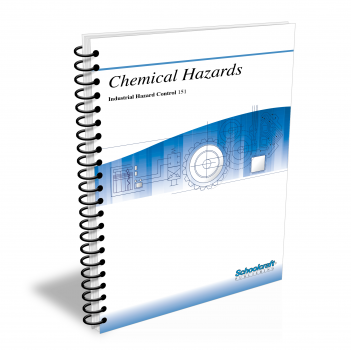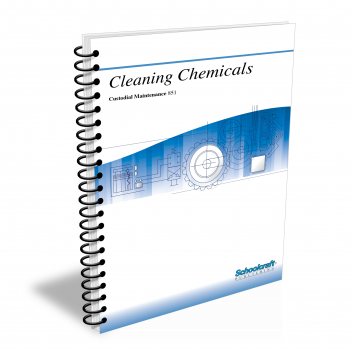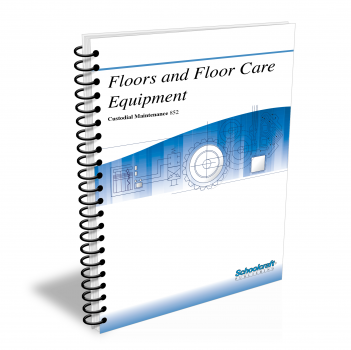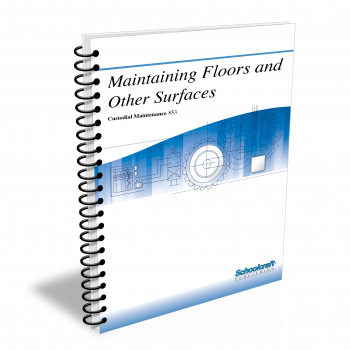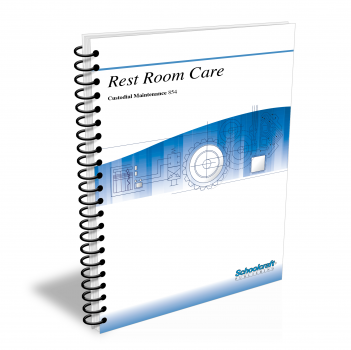Carpet and Upholstery Care
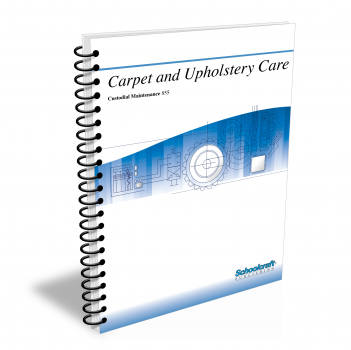
Course Number: 855
The Carpet and Upholstery Care textbook covers the many kinds of carpet in use today. It explains the importance of preventive maintenance and gives step-by-step explanations of the various carpet-cleaning methods available, explaining which is best to use on different types of carpet. The textbook describes stretching, bleeding, insect attack, and many other carpet problems, and suggests remedies. It concludes with coverage of upholstery fabrics and their care.
Does your curriculum require additional topics not included in this textbook? Build a customized version of the Carpet and Upholstery Care textbook below.
Recommended Contact Hours – 8
Preview a Chapter
Available Supporting Material
- Table of Contents
- Exam Copies
- Suggested Titles
Table of Contents
Chapter 1: Carpet Materials and Construction
Topics: Carpet construction; Types of carpets; Carpet padding and installation; Carpet color
Learning Objectives:
- Name the different parts of a carpet and explain the function of each.
- Compare the natural and synthetic fibers used in carpet yarns, and list the advantages and disadvantages of each.
- Describe the construction of the major types of carpet.
- Explain why padding or cushioning is used under carpet, and describe the different padding materials, both natural and synthetic.
- Explain how problems can develop in a carpet that is not installed correctly.
Chapter 2: Preventive Maintenance & Routine Carpet Cleaning
Topics: Dirt-catching devices; Routine vacuuming; Vacuum cleaners; Static electricity treatment; Protecting carpet yarn from crushing
Learning Objectives:
- Name the sources of soil that make a carpet dirty.
- Name the common types of dirt-catching devices, and explain how each works and where it is used.
- List the steps that you should take to police an area for preventive carpet maintenance.
- Explain how weekly vacuuming differs from daily vacuuming, and tell what kind of equipment is used for each.
- Name the parts of a vacuum cleaner, and explain how the vacuum works.
- Explain how to care for carpet in germ-sensitive areas.
- List conditions that lead to static buildup, and explain how carpets can be treated to prevent it.
- Describe the devices that prevent furniture and chair legs from crushing carpet yarn.
Chapter 3: Periodic Carpet Cleaning
Topics: Shampooing frequency, methods; Water extraction; Dry powder, foam shampooing; Wet foam shampooing; Sanitizing; Soil retardants
Learning Objectives:
- List the factors that help to determine how often you should shampoo a carpet.
- Name the four most common carpet shampooing methods.
- Explain how to make an area ready for shampooing.
- Describe each of the following shampooing methods: water extraction, dry powder, dry foam, and wet foam.
- List advantages and disadvantages of each of the above shampooing methods.
- Explain how to "set the pile" of a carpet after shampooing and tell why it is important.
Chapter 4: Carpet Care Problems
Topics: Uneven wear; Rippling; Seam problems; Shedding and pilling; Bleeding; Fading; Rapid soiling; Crushing; Mildew; Electric shocks; Insect attack; Stains; Burns; Spot repairs
Learning Objectives:
- Describe several ways of dealing with uneven carpet wear.
- Define the terms stretching, buckling, and rippling.
- Describe the problems that can occur in carpet seams.
- List the carpet problems commonly handled by a custodian as well as those that require the services of an expert.
- Explain how the problems of shedding, sprouting, and pilling differ.
- Name the five most common causes of rapid carpet soiling.
- Explain how to repair crushed pile yarns, cigarette burns, and mildew in carpet.
- Explain the step-by-step procedure for removing an unknown stain from a carpet.
Chapter 5: Upholstery Care
Topics: Upholstery fabric types; Weave and texture; Nonwoven fabric; Padding and filling materials; Routine care; Shampooing; Special problems
Learning Objectives:
- List the natural and synthetic fibers most frequently used in upholstery fabrics.
- Name the tasks that you should perform as part of daily and weekly upholstery care.
- List the procedures and materials that you should use to remove stains from upholstery.
- Explain why it is important to know what padding or filling materials are underneath upholstery before you shampoo it.
- Describe the step-by-step procedure for preparing to shampoo upholstery.
- Describe wet foam, dry foam, water extraction, and liquid dry cleaning shampooing methods.
- Explain how to solve common upholstery problems, and recognize when to call an expert.
Request Exam Copies
Exam Copies
Ready to see a copy of our textbooks? After selecting which textbooks you’d like to review for your course, you can submit your request by either logging in or creating an account so we know where to ship your exam copies. A representative from Schoolcraft will contact you to confirm and finish processing your request.
Exam copies are always free and yours to keep.
Selected Exam Copies
none selected
* Maximum of five copies can be ordered
